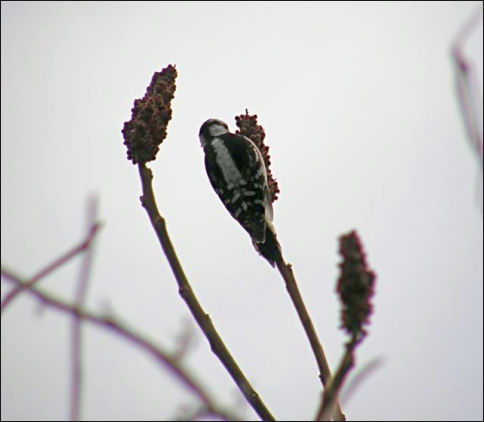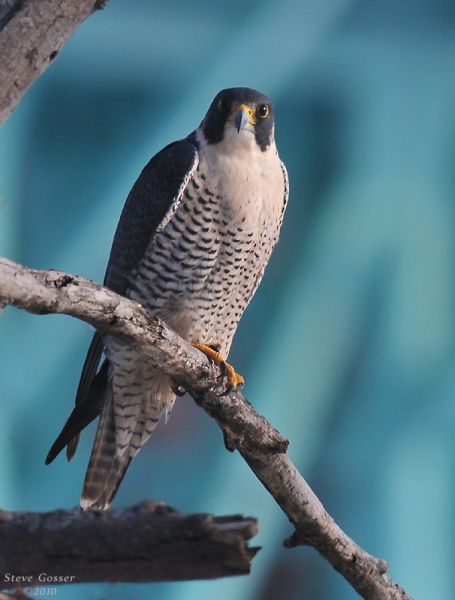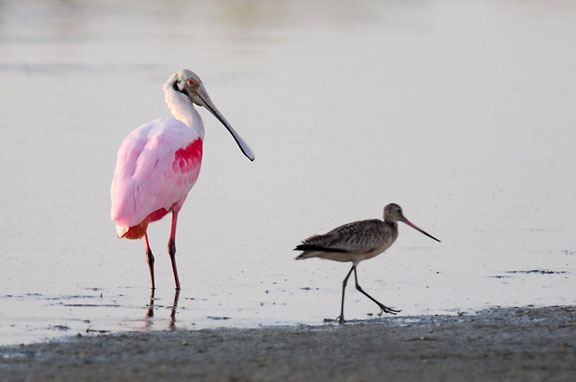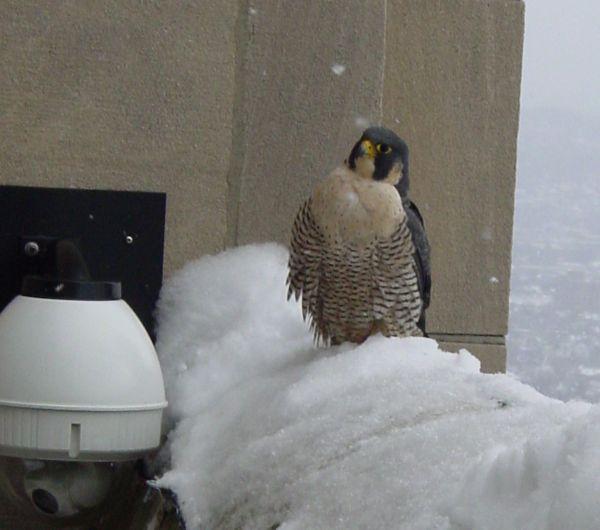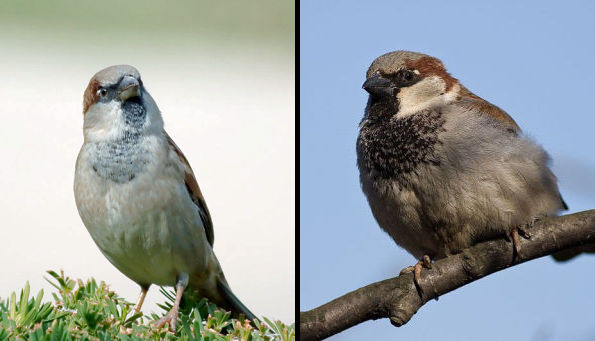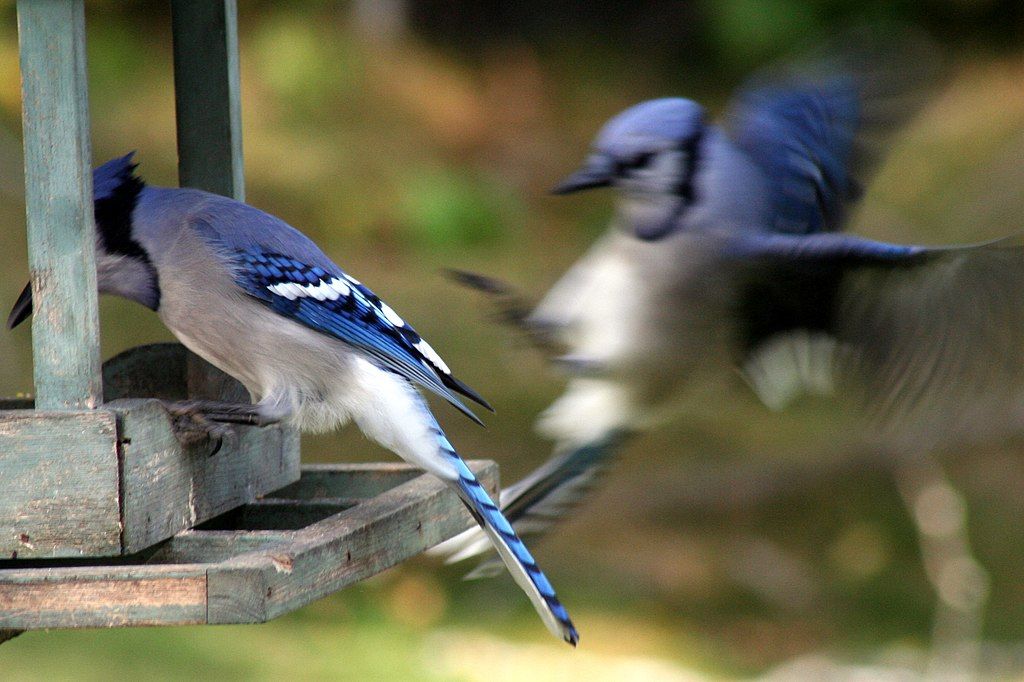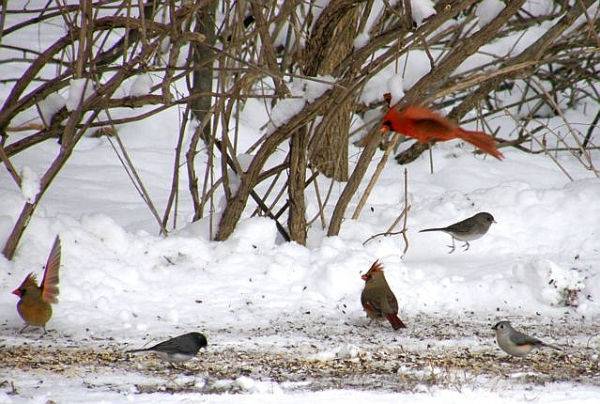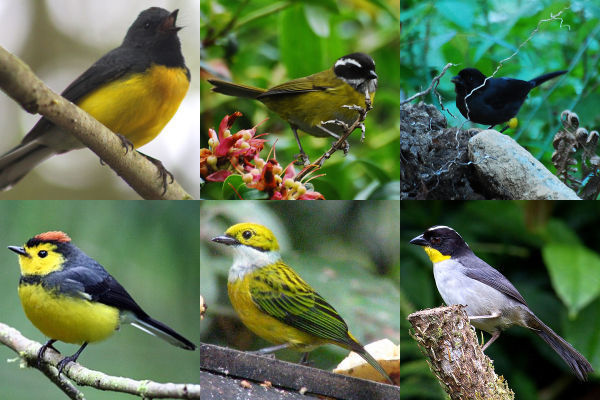
Did I tell you I live in Pittsburgh where the Steelers are playing the AFC Championship game this Sunday?
It’s a rare day that bird anatomy is related to the Steelers, but today is that day.
For many weeks I’ve been using Frank B. Gill’s Ornithology to inspire Friday’s anatomy lesson. Rather than read the whole book I open the index at random and with my eyes closed I point to a word. Then I look up that word and find something interesting to write about. Today’s word was “Yellow-throated Brush Finch, page 328.”
Page 328 discusses the advantages of multispecies flocking. Many species form mixed flocks because they get more to eat when there are many eyes watching for danger. In Pennsylvania we often see mixed flocks in winter led by titmice and chickadees. The leader species are dominant, the others follow.
Some birds go one step further. Ornithology describes how in some mixed flocks “unrelated bird species have similar plumage color patterns that promote flock cohesion. Subordinate species increase acceptance by resembling dominant flock members.”
These distinctive color patterns are called flock “badges.”
The yellow-throated brush finch (bottom right) is a member of one of these unusual flocks in Western Panama. His compatriots are all black and yellow.
As I assembled this photo, I suddenly realized that the brush finch and all his friends are wearing Steelers colors. It’s a whole flock of black-n-gold birds! How cool is that?!
So this is what we look like in Pittsburgh right now. We’re wearing our Flock Badges, black-n-gold!
.
(composite photo credits, top left to right, then bottom left to right:
1. Slate-throated Whitestart: Corey Finger on 10000birds.com
2. Sooty-capped Bush Tanager: Wikipedia
3. Yellow-thighed Finch: Wikimedia Commons
4. Collared Whitestart: Jan Axel on janbirdingblog.blogspot.com
5. Silver-throated Tanager: Kent Fiala’s Website
6. Yellow-throated Brush Finch: Atrevido1 at Solo Aves on Flickr)
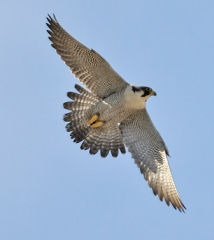 Peregrine fans! I’ve planned this event just for you.
Peregrine fans! I’ve planned this event just for you.